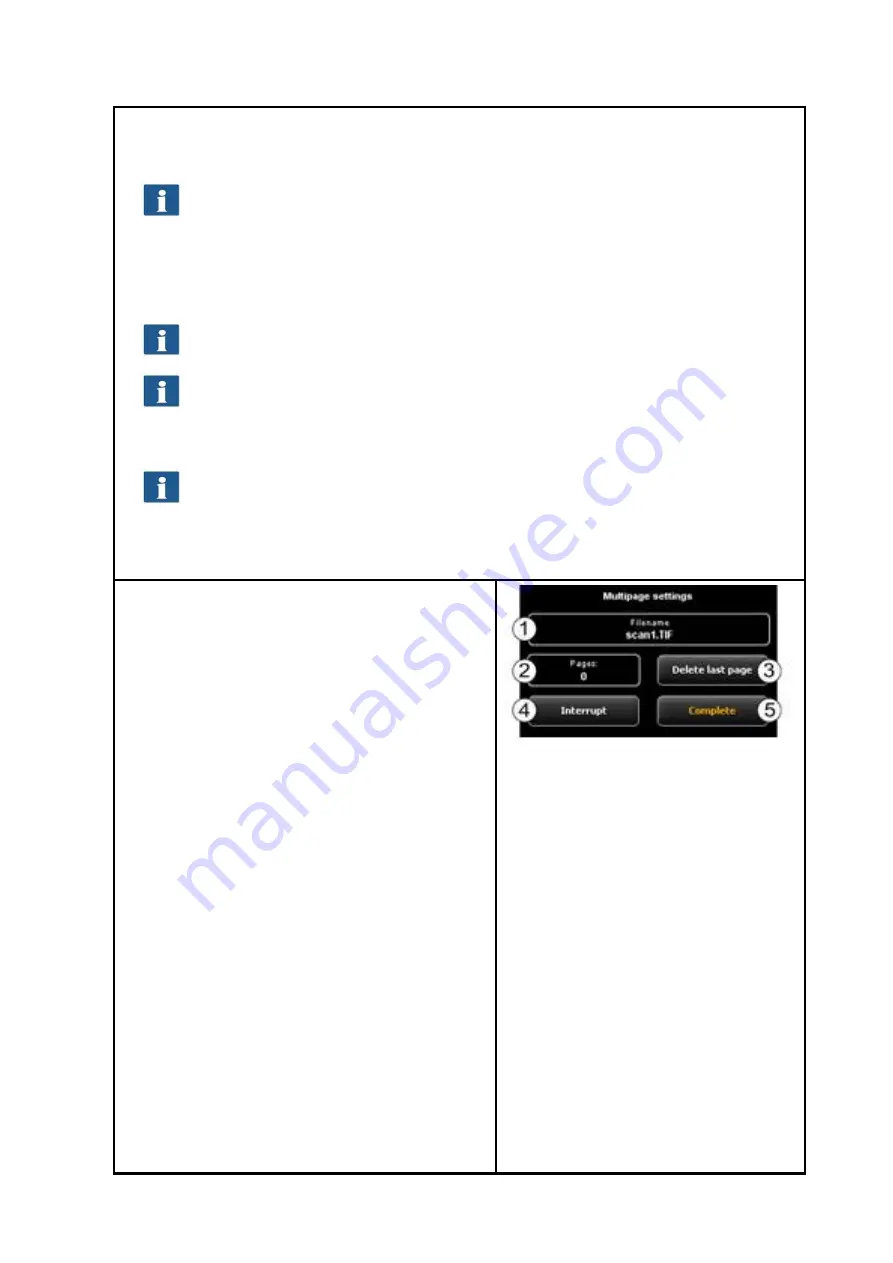
48
incremented. In this way, you can save many scans in one directory one after another
without having to adjust the file name before each scan.
You can place the number at any position in the file name. For this purpose, enter the
character "%" at the requested position in the file name.
5.
Digits of number
: Here, you can define the number of digits of automatic numbering.
Increase the number of digits if you need a correct sorting for numerous scans.
If you do not want to use any numbering, enter 0.
Example
: You entered "scan%test" in the field File name (1), selected "TIF" as file
format (2), and entered 3 under Digits of number (5). In this case, the following file
names would be created: "scan001test.tif", "scan002test.tif", etc.
You can enter further wildcards in the file name:
„{DATE}“: The date is added to the file name.
„{TIMESTAMP}“: The time is added to the file name.
In order to create a Multipage TIFF/PDF file, first
select the file name and then file format Multipage
TIFF/PDF. Each scan or saving operation effected
subsequently will then be added as additional page
to the multipage file.
1.
File name
: The previously entered file name
is displayed.
2.
Pages
: The pages already added to the
multipage file are shown.
3.
Delete last page:
Press this button if you
want to delete the page added last.
4.
Interrupt
: With this button you can perform
a normal scan (or saving operation) in
between which will not be added to the
multipage file; afterwards you can add
pages to the multipage file again by
selecting
Multipage
TIFF
and/or
as file
format again.
5.
Complete
: Press this button after having
scanned the last page for the multipage file.
Figure 5.15: Multipage settings






























